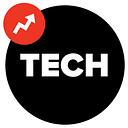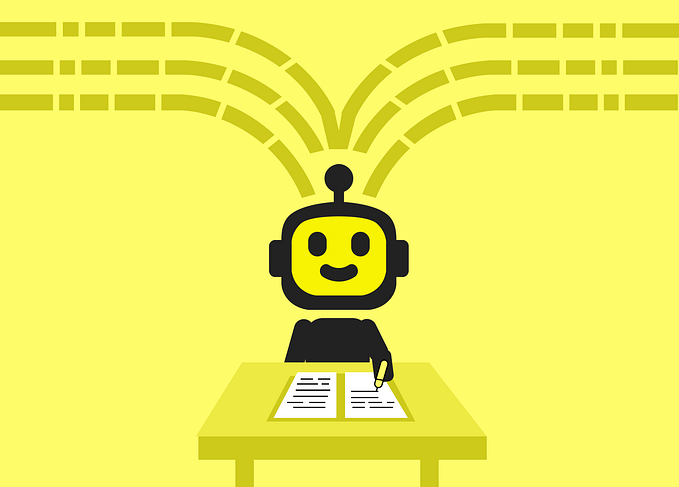How We’re Building Superpowers for Social Publishers at BuzzFeed
Over the past year, my definition of a “good” internal workflow tool has evolved significantly. I once believed a “good” tool eliminated repetitive manual tasks and helped BuzzFeed employees finish their work more quickly, with fewer mistakes. A “good” tool was easy to use and filled with features that users loved.
In the past year, I realized my definition of “good” was accurate but incomplete.
Workflow tools aren’t only about making people more efficient. They should be your business’s competitive advantage. They should incorporate innovative technology to help grow your company in the most meaningful ways. A “good” tool can help retain your most talented staff.
I had this realization after I started leading product for a relatively new team at BuzzFeed called Distribution Tools. My team is responsible for building tools & services that distribute BuzzFeed content everywhere it needs to go to reach (and bring immense delight or groundbreaking news) to our audience. This essentially means we build products that send all of our content to social media platforms (like Facebook, YouTube, Twitter and Instagram), OTT destinations (like Roku and Pluto) and to syndication partners. Over the past year, our product approach evolved from building easy-to-use publishing tools that let people work more efficiently, to building artificial intelligence and machine learning models that let people work more intelligently. Today, I want to share some details of this evolution with you.
Some Background
Before I dive deeper into talking about our work, there are few facts you need to know for context:
- BuzzFeed creates 1200+ new pieces of content every week. This includes: videos, quizzes, listicles, breaking news posts, memes, .gifs and so much more.
- Our social media team distributes this content to our diverse audiences across 400+ social accounts on 10 different social platforms (such as Facebook, YouTube, Instagram, Snapchat, Tumblr and Twitter).
- While BuzzFeed’s site and app have a large user base, a significant portion of our audience discovers our content on social platforms.

The distribution workflow becomes challenging for social publishers as we increase the amount of content we produce and grow the number of social destinations. The team is stretched really thin trying to make sure every piece of content is being distributed to all the right places. When I walked by their desks they looked something like this:

Building The Foundation
When we first formed as a team, we were obsessed with figuring out how tech can could improve the social publishing team’s existing workflow, which relied on several third-party tools.
- We started by launching a new proprietary distribution tool, PubHub, to make it faster for publishers to find content (videos, images, posts) and publish it to social platforms.
- We automated the process of collecting crucial data, so publishers didn’t have to manually add data to spreadsheets to power reporting.
- We shipped features that saved time, like auto-generating YouTube descriptions or setting default monetization settings.
- We launched automated Slack notifications so content creators didn’t have to bug the social team to find out when their work was going to be published.

People were thrilled about what we were building! The response to most feature launches looked something like this:

Within a year, we had laid a strong foundation for distribution tooling at BuzzFeed. PubHub quickly became a beloved internal tool and was used on a weekly basis by 220+ people. The tool allowed the social team to distribute more content than ever.
Building The Super Powers
In spite of the fact that we had built a tool that the social publishing team found increasingly indispensable, we knew that we had only streamlined their workflow. We hadn’t fundamentally changed it. We started to wonder if tech could offer our users something better…something they hadn’t imagined yet.
We had this lingering question: Are we sure each piece of content we produce is reaching its full potential and reaching our most loyal fans?
We have a lot of data about the content we produce and we have data on what performs best on our various social channels. We were curious to learn if Tech could make social distribution more effective through data-powered publishing recommendations, enabling social publishers to focus on various more impactful tasks. We began by discussing this idea with our social media team, my engineering team and our data science leads. Everyone was excited about working together to see if data-driven publishing had potential.
We then started building a machine learning model that suggested content to publish to a page based on previously performed well on that page. Our team tested the model in a lightweight way by surfacing the recommendations in Slack for users to test:

Our users found the initial recommendations useful and we’ve continued to expand data-science investments:
- We built a model to help social find trending older content to repromote when new content output is low.
- We built similarity recommendations to help social find content that’s similar to high performing posts and keywords for their page.
- We’ve worked on a scheduling model to suggest an optimal publish time for a specific post based on past performance of similar content.
With each new model we built, we partnered with social publishers to test it and make sure it actually worked. Now, we’re starting to build new tooling that will incorporate this data-science work and allow social publishers to:
- Quickly schedule recommended content to their pages by dragging content from a recommendation queue to a page’s publishing schedule.
- “Dismiss” recommendations, so that our data science models can learn from human feedback and become smarter overtime.
- Easily reference useful data (like progress towards social engagement or output goals) to help them make informed decisions on what to publish.
We’re excited to see how this new tooling helps the team take BuzzFeed’s social media game to the next level and deliver all of our best content to our audience.
Top 5 Things I’ve Learned So Far
Our work in data-powered workflow tooling is still evolving, and I’m learning new things every day. I’ll leave you with my top lessons learned:
- Using artificial intelligence and machine learning to improve workflows is not about replacing jobs. It’s about giving smart, creative people more time to focus on work that computers aren’t good at. We’re trying to build a future where social publishers spend less time on tedious tasks like finding the content we’ve already made and more time on impactful tasks like collaborating with creators to make better content, experimenting on new platforms like IGTV or growing new audiences and channels.
- Avoid using data science buzzwords when collaborating with users. We noticed using words like “machine learning” and “artificial intelligence” in user conversations can be confusing. Instead of saying, “We’re going to build a machine learning model to make recommendations for posts with a high confidence score for your social page.” Say, “We’re imagining using data to generate a queue of recommended posts for each page. It would look something like this… [show people a wireframe or design.]”
- When exploring something experimental like improving workflows with AI or ML, it’s important to test in the lightest way possible. When we start to work on a new model, we often surface our recommendations in third-party software like Google Sheets, Mode reports, or Slackbots at first. This allows us to move quickly, focusing most of our time on building and refining the models. We don’t want to build new tools (or even integrate the models into existing tools) until we have confidence that our models work.
- It’s important that the data science models serve realistic user workflows. When we started working on this project, we discussed two approaches: (1) go to a piece of content and see suggestions for where it should be published or (2) go to a page and see suggesting for content that should be published to that page. The first option seems like a logical place to start, but it doesn’t work with how our social teams are organized. So, we went with the second option. It’s important to build solutions that are realistic to your company’s internal workflows… otherwise, no one will use them.
- Don’t abandon pragmatic wins when working on experimental projects. Just because we’re working on more experimental data-driven curation recommendations doesn’t mean that we’ve completely given up on delivering pragmatic workflow improvements. We still love to work simple, crowd-pleasing features and enhancements into the product roadmap.
Do you work on products that use AI models to improve workflows? What have you learned along the way? Send us a comment below.
BuzzFeed Tech is hiring. If you are interested in browsing openings, check out buzzfeed.com/jobs. We have roles in Los Angeles, Minneapolis, London, and New York!
To keep in touch with us here and find out what’s going on at BuzzFeed Tech, be sure to follow us on Twitter @BuzzFeedExp where a member of our Tech team takes over the handle for a week!









